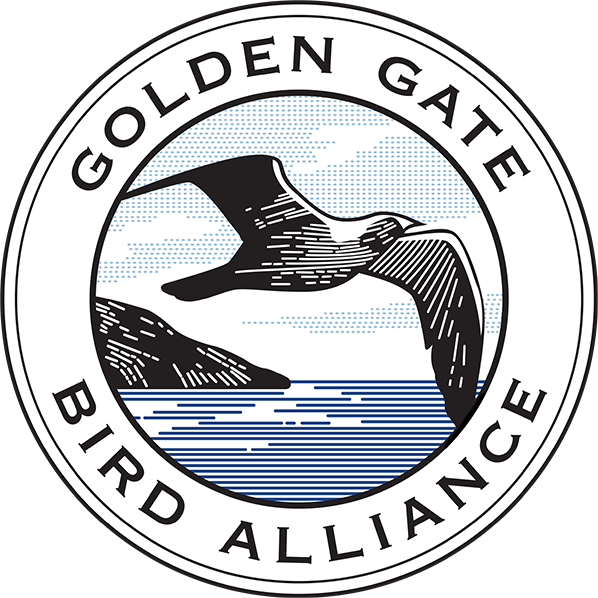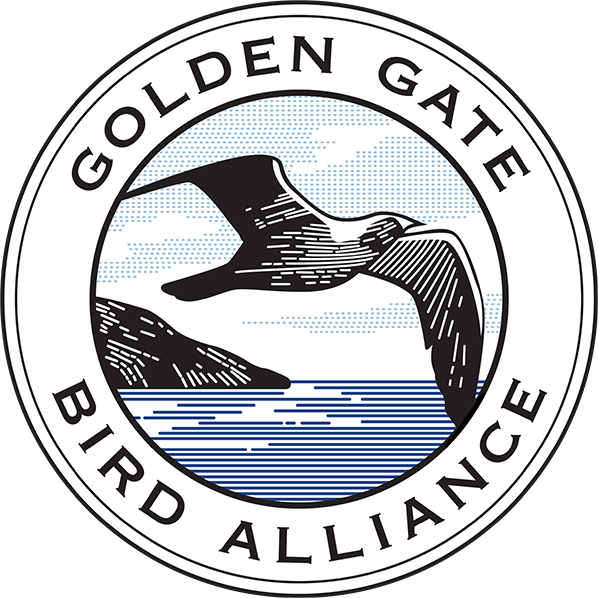Founded in 1917, Golden Gate Bird Alliance engages people to experience the wonder of birds and translate that wonder into conservation action. We offer over 150 free bird walks each year, monthly guest speakers, and volunteer opportunities restoring habitat, educating young people, and engaging in conservation advocacy and citizen science. See our website or sign up for our email newsletters to learn more.
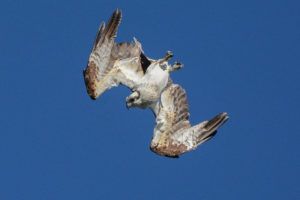
Ospreys – sometimes known as “sea hawks” – are magnificent large hawks that evolved to hunt and eat fish. Their vision is over three times better than human vision so they can spot fish swimming below. The dark band around their eyes reduces glare from water. Their feet are unique among North American hawks: Rough pads on the feet help grip slippery fish, while one of their talons rotates to hold fish more aerodynamically in flight.
Ospreys are one of the most widely distributed birds of prey, found on every continent except Antarctica. Ospreys are relatively easy to identify. Look for the white head, white breast, dark back, dark eye patch, and hooked beak. Flying overhead, their wings make a sharp M or W pattern rather than a gentle curve. Hovering over the water, they dive for their prey and then plunge with their head and feet forward, grabbing the fish with their feet. You might spot an Osprey carrying a fish across the water to its chicks, to a mate sitting on the nest, or over to a perch to eat it solo.
Ospreys can live as long as 15 to 20 years. In that time, they may fly 160,000 miles in migration! According to Cornell University’s All About Birds web site, the oldest known Osprey was at least 25 years old and lived in Virginia. It was banded by scientists in 1973 and found again in 1998.
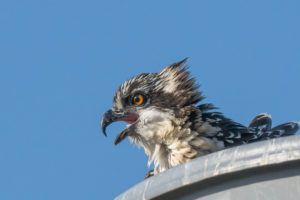
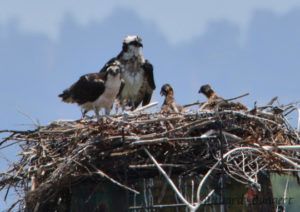
Ospreys typically raise one brood of chicks each year, laying one to four eggs. The male and female take turns sitting on the nest for 36 to 42 days until hatching. The chicks hatch one at a time, with the last sometimes hatching as many as five days after the first. Then the young spend 50 to 55 days in the nest – being fed by their parents – before they learn to fly.
Osprey Statistics
Length:
21.3 to 22.8 inches
Wingspan:
59.1 to 70.9 inches
Weight:
49.4 to 70. 5 ounces
Egg Length:
2.2 to 2.7 inches
Egg Width:
1.7 to 2 inches
Nest Size:
2.5 ft. to 6 ft. wide
For More Information
- All About Birds (Cornell Lab of Ornithology)
- Guide to North American Birds (National Audubon Society)
- Welcome Ospreys to San Francisco Bay (Golden Gate Bird Alliance, 2014)
- Atop Food Chain, Ospreys Ingest Many Poisons (National Geographic, 2014)
- Ospreys of San Francisco Bay (PDF)
